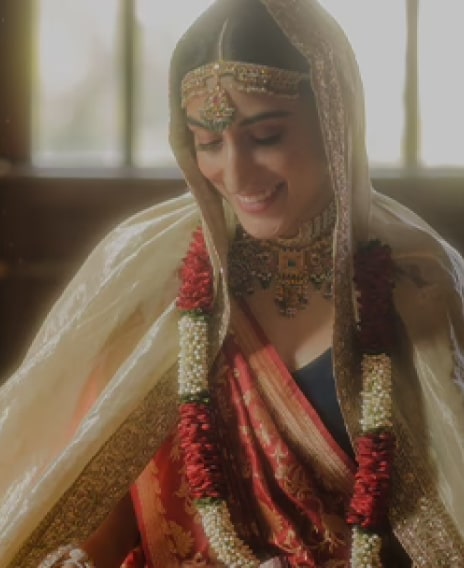Shopping for jewelry for your wedding?
This one’s for you.
Bridal jewelry shopping, although exciting, can be a tedious process!
The unending variety of bridal jewelry available can often lead to a lot of confusion on what to buy.
When it comes to Indian weddings, kundan and polki jewelry seem to be every bride’s favorite choice. And while you might have a fair idea on what exactly kundan or polki is, we thought we’ll answer all the questions we get on a regular basis from brides and jewelry wearers on what kundan, polki and jadau are and the similarities and differences between them all.
Below, we decode it for you.
What is Polki?
Polki is an uncut, unpolished diamond in its raw, near earth-mined form with one side flat and the other cut to a slightly convex, curved shape.

Classic pair of Polki Earrings from Aurus
What Does Uncut Mean?
Polki jewelry is made using gold foil, which has intricate designs at the back. The uncut diamonds are then secured in these gold foils. Polki is therefore timeless and a classic style of Indian jewelry, making it a good investment that is often passed down as heirlooms within families.
 Meenakari (enamel) on the backside of polki earrings
Meenakari (enamel) on the backside of polki earrings
A Brief History of Polki
This craft of using uncut diamonds in jewelry dates back to approximately 2500 years, when it was first brought to India by the Mughals, after which the craft made its way to the courts of the Rajputs, and subsequently, to royal families across the country. All of these royals adapted the polki technique to their own version according to their tastes.
Today, polki jewelry is still considered just as valuable and this is seen in it’s usually high-priced costing.
In present day, it is Bikaner in Rajasthan where the most skillfully hand-done polki technique is practiced. The other place, second only to Rajasthan for its polki jewelry, is Gujarat.

Classic Polki necklace and earrings set from Aurus
Three Grades of Polki
The most high-quality material is categorized as ‘Syndicate’, a phrase that in the ’60s and ’70s meant material coming from De Beers. Now, the industry uses the term to describe top-grade polki.
The next grade is called ‘Zimbabwe’, simply defined as material coming from the Zimbabwean mines of Africa. The third, which is the lowest grade, is termed as ‘khilwas’. These categorizations are done to describe the fundamental quality of the material, so that buyers can make a more informed purchase.
The second most important aspect to consider is treatment. Like gemstones, polki slices are also treated to improve their appearance. Usually, fillers are inserted in the slices to improve clarity and colour. The fillings are typically 30%, 60% and 80%. Khilwas Polki is always treated because it otherwise looks quite unattractive and would be difficult to use. Large pieces in necklaces are almost always set with ‘Khilwas’.
Kundan
Within the jewelry industry, the term kundan has two connotations to it, which is what creates all the confusion for a layman.
One connotation of kundan refers to the 24 karat gold foiling used on the base to hold the stones or glass together
Glass is used in place of uncut diamonds to cut cost. However, kundan jewelry still uses gold or silver as the base metal and therefore, is considered precious jewelry. It is just less expensive as compared to polki.
Jadau
Jadau is not a type of jewelry or stones like Kundan and Polki, though it is often confused to be so. Jadau is the traditional name given to the technique of setting gold around the Polki, glass or any other colorless stone. The word “Jad” literally translates to being embedded.
Therefore, it is this art of setting 24 karat gold around stones which is called Jadau and the jewelry made thereof, known as jadau jewelry. In Jadau jewelry, the stones adhere to the gold without the help of any adhesive.
Polki stones are often used in traditional Jadau jewelry work as it suits the rough-edged quality of Jadau. This is because the polki diamonds themselves are uncut and aren't as clear or well-manicured as normal, cut diamonds are. That being said, polki is just as pure or valuable as cut diamonds.
To sum up, polki is the name given to uncut, raw diamonds, Kundan is the pure gold strips that are fitted on the stones to set it and it also refers to a cheaper version of polki that uses glass instead of diamonds and Jadau is the technique by which the stones in polki or kundan jewelry are set in gold (or sometimes silver).















